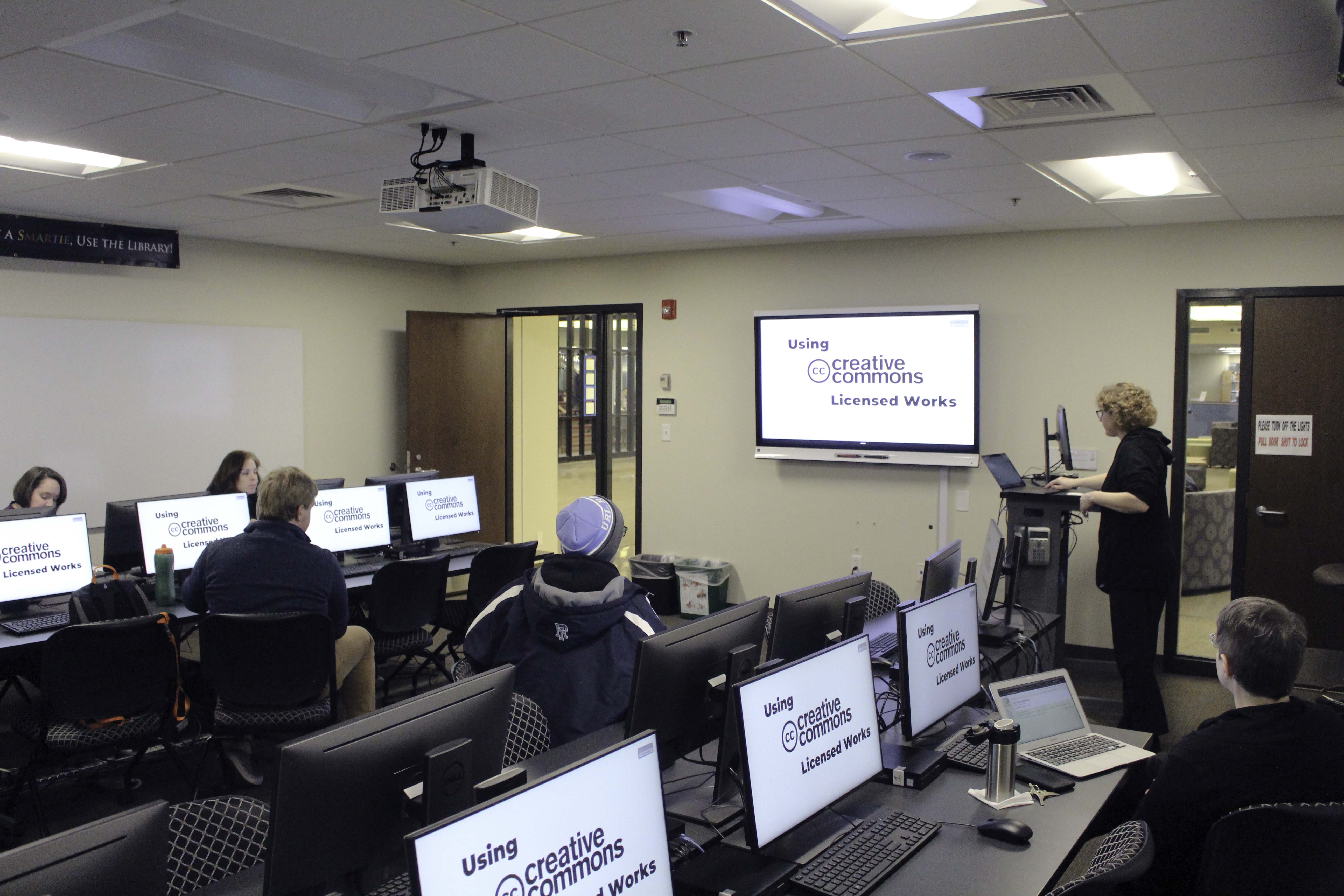The URI library hosted a seminar on copyright right and different types of licensure that was open and free to the community. Photo by James McIntosh.
The University of Rhode Island library held the Search Savvy Seminar for students and faculty to better understand how to license their creative works last Friday.
The event was lead by Andrée Rathemacher, head of acquisitions at the URI library. This seminar covered the basics of copyright in the digital age, the different types of Creative Common (CC) licenses, how to search and reuse CC work found online and how to apply your a CC license to your own creative work.
“Everything someone creates is automatically covered by copyright,” Rathemacher said. “For example, the notes you are taking now are copyrighted in your name.”
The United States copyright law covers literary and artistic works, which fall under a broad category of topics. Some of these are writings, dramatical productions, choreography, compositional works, computer software and visual arts like video and images.
There are many exceptions and limitations to U.S. Copyright Law, but the two focused upon in the seminar were Fair Use and The Public Domain. Fair Use, which is the most liberal exception applies to copyrighted material used for criticism, comment, parody, news reporting, teaching, scholarship and research. A work can enter the public domain when they are no longer subject to any copyright due to the term expiring. This can happen 70 years after the creator’s death if the license is not renewed.
Rathemacher reminds people to “think of articles, blogs, music and photographs and how most of this information is consumed, by the internet.”
In order to search for images and articles in different categories of the Creative Commons, it is recommended to use the advance search on Google, as you can select which license to search by. For images it was recommended to use Flickr, as they have an in depth CC library that is easy to use and attribute.
To copyright your own material, it’s recommended to use a program like the CC License chooser website. Simply enter in what you want your creative work to be used as, and it will walk you through applying the correct CC license.
Those in attendance had a common goal, they wanted to benefit their students and their colleagues in protecting their creative work. Katie Branch, an associate professor in the Human Development and Family Studies department attended to learn how to “use CC with visual research.”
CC was formed in 2001 to encourage creators to distribute their works in the digital age. There are four different types of CC licenses, and they can be combined to create six different kinds of licenses.
The first is Attribution (BY), which allows the user of the CC work to freely use it, as long as they credit the original creator. This is similar to citing your sources in a research paper, so it is an easy concept to grasp.
The second is a Noncommercial (NC) license, and doesn’t allow a creator to use another’s work to profit.
“It is about the use and not the user,” Rathemacher said. “For example, if a nonprofit used a NC licensed image in a calendar they offered for sale, they would be violating the license for that image.”
The next type is called ShareAlike (SA), which means that any adaptations of an original work must be licensed the same way. If someone made a parody of a NC work, then that parody would be considered NC as well.
Finally there is the NoDerivative (ND) claim. This states that no adjustments can be made to the original work being used. Any modifications, no matter how slight they are can be considered a violation.
There will be another seminar on Tuesday, March 5 at 3 p.m. in URI’s Carothers library.




